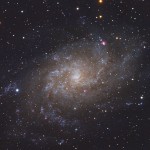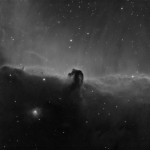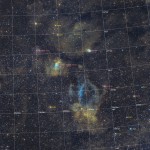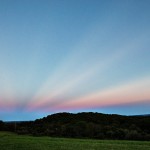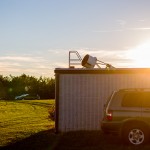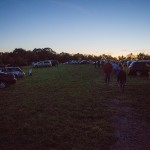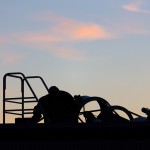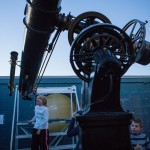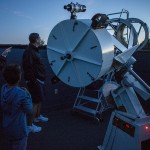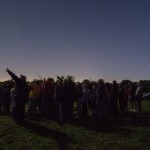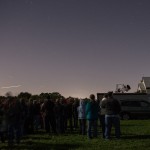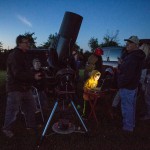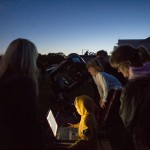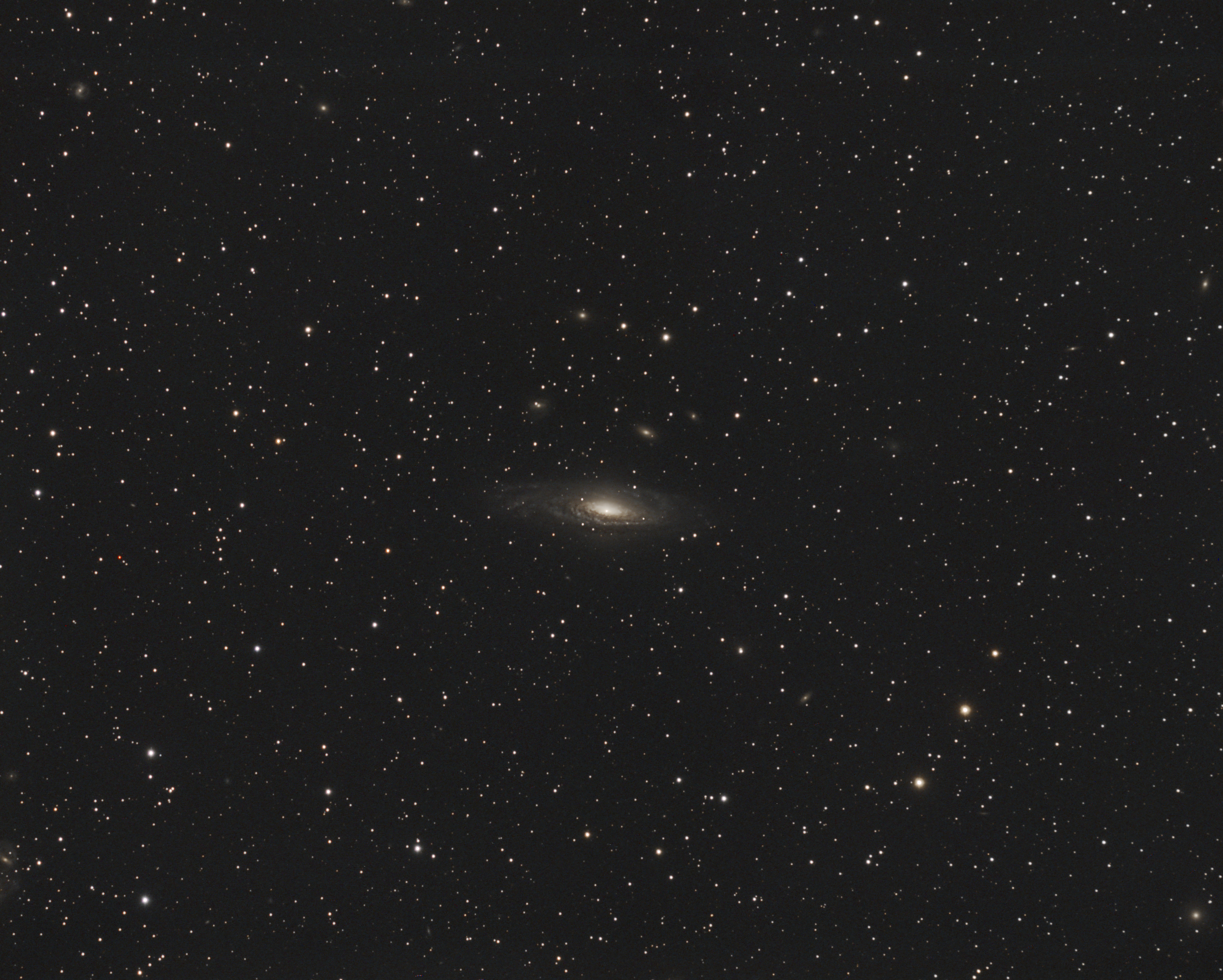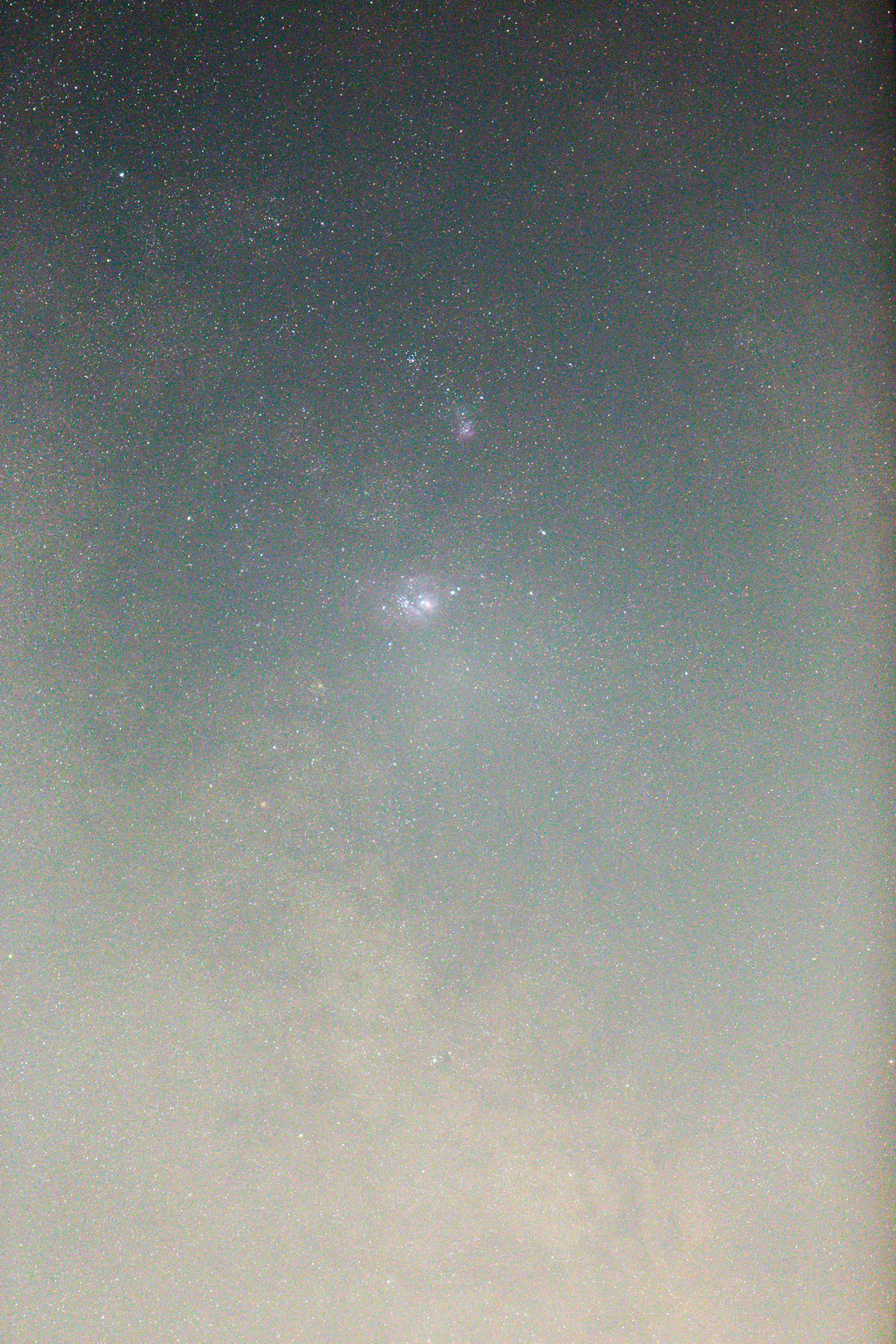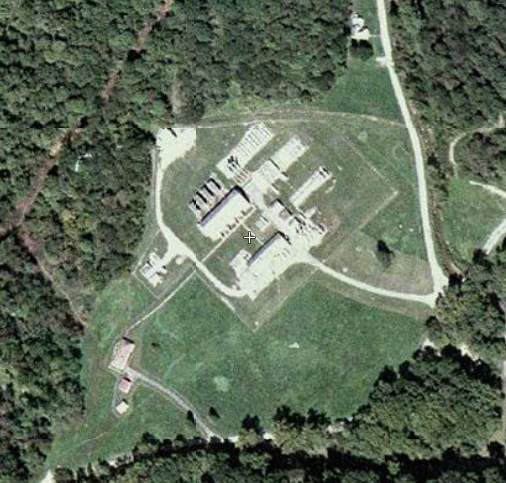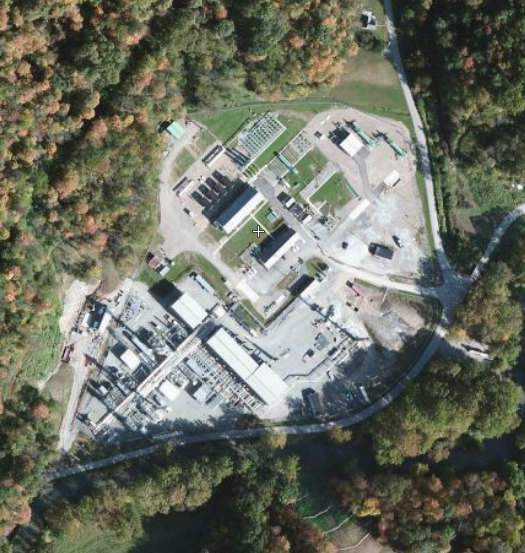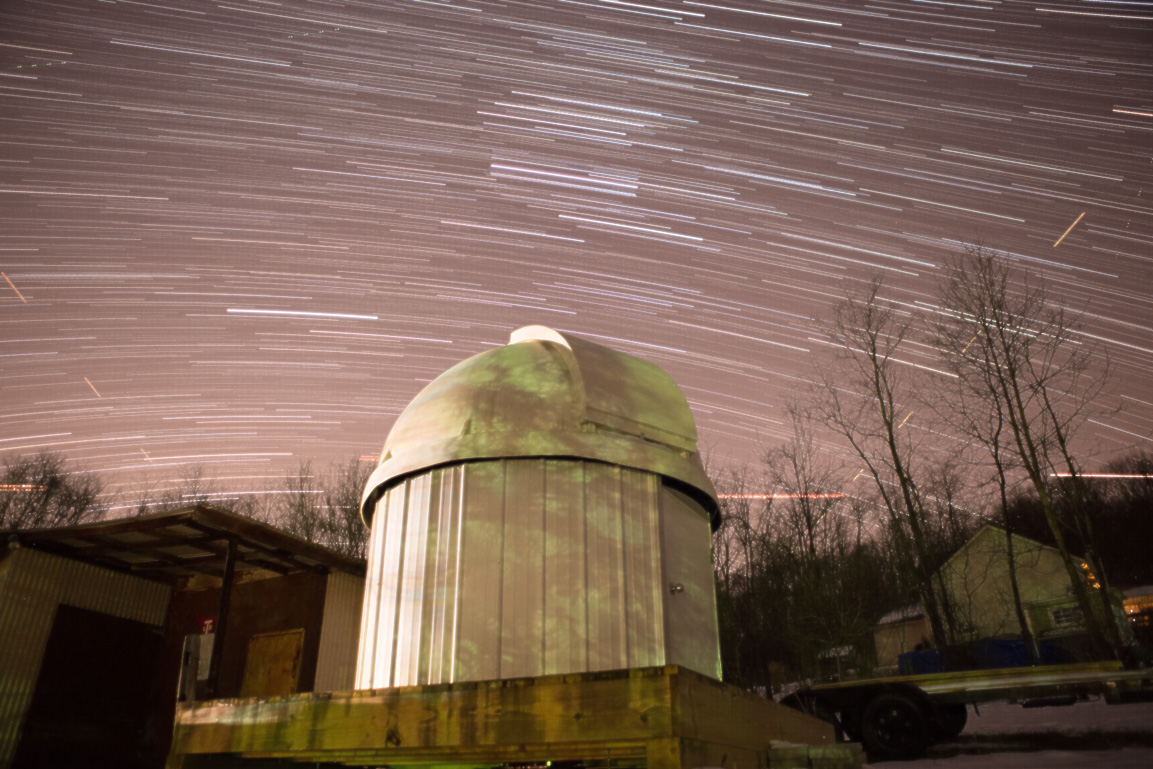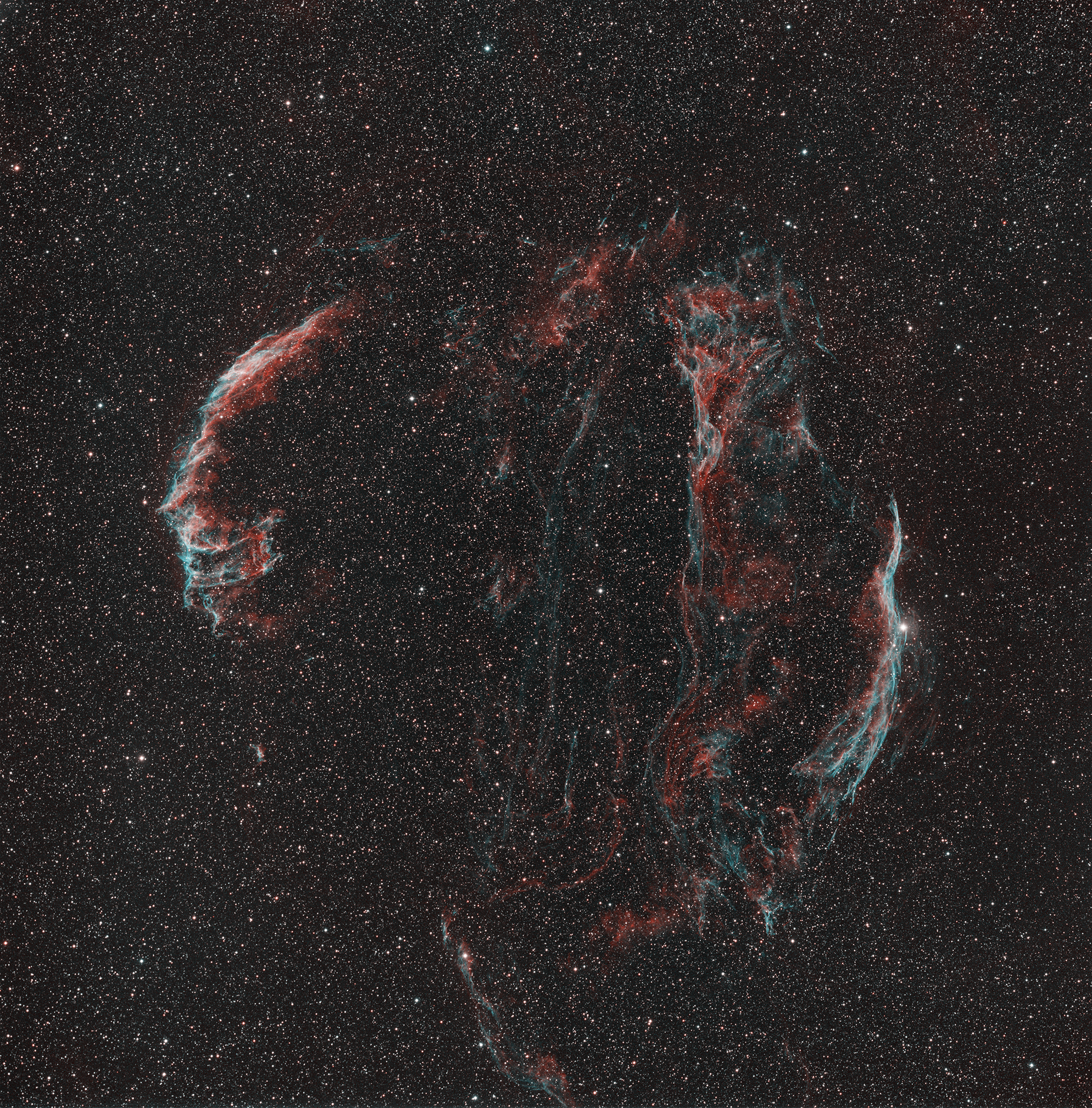- Galaxy M33
- AP130EDT f/6.3 Apogee A694 Atlas EQ-G 5x20min Ha
- AP130EDT @ f/6.3 Apogee Ascent 694 CCD Atlas EQ-G Mount w/ EQMOD
- Annotated NGC 7331
- M52, NGC 7635 The Bubble Nebula, SH2-157 The Lobster Claw Nebula, SH2-161
- (Earlier Work) Annotated
This area is rich in diversity offering the Open Cluster M52, Emission Nebula SH2-157 aka The Lobster Claw Nebula as well as SH2-161. Also included is the more famous Bubble Nebula NGC 7635.
Imaged from my backyard outside Pittsburgh, PA.
Telescope: Tak FSQ-106ED
CCD: Apogee U16
Mount: AP900GTO3
Exposure Time: H-Alpha = 14x20min, O[III] = 9x20min, S[II] = 10x20min
Total Exposure Time = 11 Hours
It was a beautiful night, chilly but not too cold, for a star party.
- The evening started out with anticrepuscular rays
- The sun was setting over the 21″ Manka Reflector wing of Wagman Observatory
- Club members and guests line up in the observing field
- Club members and guests line up in the observing field 2
- Gene pointing out a few things to some members of the public
- Viewing Saturn ( I believe) through the Manka before it got to low
- Viewing through the 11″ Brashear Refractor
- Viewing through the 21″ Manka Reflector
- Tom drawing the crowd and giving a short presentation on the night sky
- Tom drawing the crowd and giving a short presentation on the night sky 2
- Frank entertaining on the 11″ SCT
- Frank entertaining on the 11″ SCT 2
Mediocre conditions at my dark site in terms of haze / fog early on turning to all fog later so only 2.5 hours of exposure on this one. Combined with the new light pollution from the gas companies this isn’t a great image but it was a good test for the A694 camera and the Atlas mount throwing the longish AP130EDT f/8 refractor around.
On 8/29/2013 I visited my dark site, a 2 acre plot outside West Finley, PA near the PA / WV border. There is a huge increase in traffic, road construction, heavy equipment excavation, etc. occuring in the region due to the new fracking technologies that have allowed the gas industry to go after the vast gas stores within the Marcellus Shale. Several hillsides near me have been leveled off for drill pads and 3 wells have been drilled with 2 more permitted in the very near vicinity. My darkest sky to the south is now my brightest horizon with a bright light dome extending up to 60+ degrees completely blocking out the southern Milky Way. It is now difficult to see the Milky Way except at zenith and in the north east (where the other 2 are permitted!)
My dark site previously resided in a “yellow” zone bordering green on the light pollution map with a SQM measurement of 21.1 on a typical night at zenith. It is now an “orange” zone at a SQM measurement of 20.2. I am including a widefield shot of M8, the Lagoon Nebula, from 2 years ago vs. one taken last night in order to show the difference the light pollution impact has on astrophotography / astronomy.
I would note that the SQM reading at my home in Franklin Park is 20.1 on a good night; nearly the same as an average night at my darksite now that the drilling boom as begun. I should note that uplit drill rigs, flaring, and other activities are temporary. Unfortunately, the infrastructure that goes along with processing the gas is not and my site is affected by the permanent installation 1.7 miles to my south pictured below.
While I support energy independence, local jobs, and fracking in general, it is hard not to stop and wonder when every month sees major new excavation on your quaint country dirt road.
Here you can see the massive changes in infrastructure directly to the south of me in just the last year in satellite views.
The A694 finally saw first light after an extended bought of bad weather and other personal issues. This is a single 20 minute frame without any bias, dark, or flat calibration taken through an AP130EDT f/8 reduced to f/6.35 with the AP 0.75X reducer all riding on an Atlas mount.
